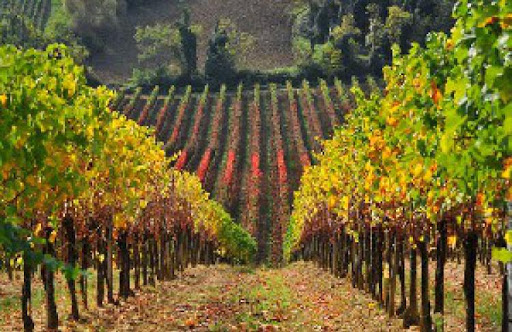Abruzzo lies in the centre of Italy and is bounded by the Adriatic coast on the one side and the region of Lazio (home of Rome) on the other. The region has an untouched rugged interior and is the only European region to assign one third of its territory to parks and reserves.
Majestic mountains, scenic rivers and lush green forests add to the mystery and beauty of the region which takes in many mediaeval towns and the rugged Appenine mountains running through the centre of Italy. But it’s wines standout too for their generosity of flavour and value.
The pretty town of Pescara on the Adriatic coast is a good base from which to explore the Abruzzo wine region. Featuring a shoreline that extends for more than 20 kilometres, Pescara is a major city of Abruzzo. It’s a popular vacation point for Italians in the summer, featuring pretty beaches, wonderful food and a lively nightlife. The regions surrounding Pescara, and much of Abruzzo, are covered with olive trees and grapevines.


Indeed, Abruzzo’s vineyards extend over an area of over 3,000 hectares, from the hills of the coast to the slopes of the mountains, in a typically Mediterranean, temperate climate. The region’s most famous wine is the sumptuous Montepulciano d’Abruzzo. This beautiful Italian red wine is fast becoming as much of a favourite overseas as it is in Italy as the wine is typically very approachable. Many younger vintages have relatively low tannin levels and relatively low levels of acid, so it is ideal for everyday drinkers.
Montepulciano d’Abruzzo can be compared to Cabernet grapes because it is fruity and dark in colour. Soft tannins help to give Montepulciano d’Abruzzo body and like Australian red wines, it is a pleasure to drink because it offers so much fruit flavour, more so than more famous Italian red wines like Chianti (made with the more savoury Sangiovese grape) or the famous Barolo wines. It has a dark inky-purple colour and can have a big syrupy mouthfeel.
Inexpensive Montepulciano abounds, and are some of the best Italian wine buys available. One downside is that the flavour doesn’t vary much across producers. But that’s also true of Australian wine too, especially Shiraz from McLaren Vale of Barossa Valley, of which there are hundreds of examples, but not necessarily much taste variation. An important note too – Montepulciano d’Abruzzo shouldn’t be confused with Vino Nobile di Montepulciano, a Tuscan wine made from Sangiovese. Within Australia, many wine sellers will sell Montepulciano d’Abruzzo, which can be drunk as a young unoaked wine or as an aged, barrel-fermented wine up to 10 years old.
Over the past few years, the Montepulciano d’Abruzzo variety has been successfully introduced into Australia along with other Italian wines including Sangiovese, Barbera, Nebbiolo, Pinot Grigio and Trebbiano. While traditional French varietals Chardonnay, Shiraz, Cabernet Sauvignon, Sauvignon Blanc, Merlot and Pinot Noir have dominated domestic wine production and consumption, Australians are now branching out into Italian varieties too, of which there are hundreds. Italy’s Ministry of Agriculture and Forestry (MIPAAF), has documented over 350 grapes and granted them “authorized” status. Italy also hosts some of the oldest wine-producing regions in the world and the variety of wines is huge.
Other common grape varieties grown in the hills of Abruzzo include Sangiovese, which is typically blended with Montepulciano d’Abruzzo, as well as white variety Trebbiano. Abruzzo is also home to an indigenous grape variety Pecorino, from which a white wine is made.
Many of the wineries in Abruzzo offer the opportunity to taste at their cellar doors. Within easy reach of Pescara is the cooperative winery Cantina Tollo, where you can taste from a broad selection of local producers. The quality will astound you and the prices for a DOC Montepulciano d’Abruzzo start from as little €5, with wine matured in French barrels from €7. That’s one reason that visitors from other European countries visit the winery and buy the wines by the carton, not by the bottle.
For detailed information about local wines and wineries, the Enoteca Regionale d’Abruzzo in the town of Ortono, just south of Pescara, also provide tastings – if you can get there in the COVID era.
You should note that quality of Italian wines can be high because of the government’s rigorous regulation of the wine industry and wine quality. Italy’s Denominazione di Origine Controllata (DOC) system is based on the French model, which regulates where and how wines are made. But Italy’s regulation goes further: the system regulates not only the production area and methods for each wine, but also guarantees the quality standard of certain wines which must pass a taste test.
The Denominazione di Origine Controllata e Garantita (DOCG) demands wine producers must follow the strictest regulations possible to make that wine and DOCG wines must pass a blind taste test for quality, in addition to conforming to the strict legal requirements to be designated as a wine from the area in question. No such test exists in Australia. Most traditional high-quality Italian wines are produced in DOC or DOCG areas. All DOCG wines and some DOC wines will have a paper band containing a serial number that covers the cork or wraps around the neck of the wine bottle.

Serge